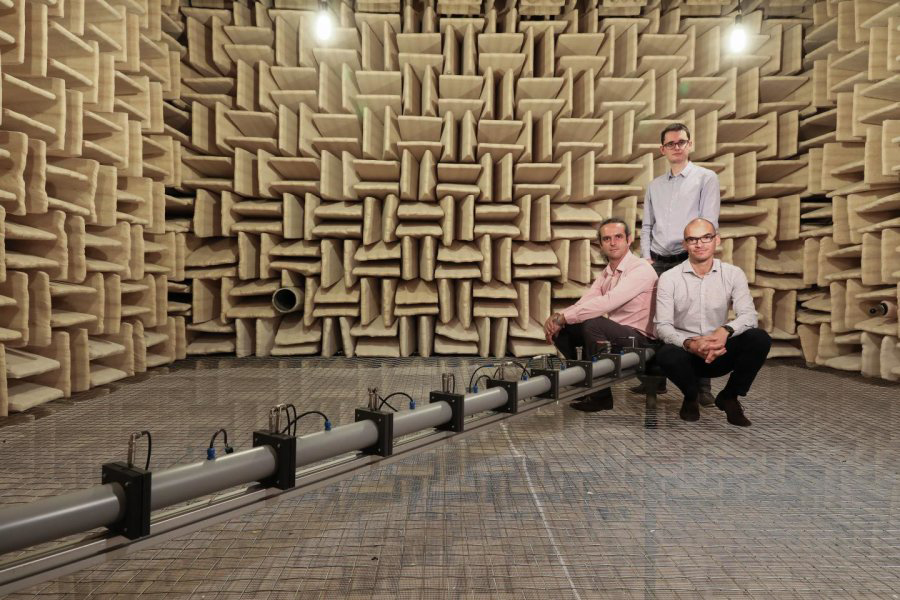A team of engineers is harnessing the power of sound waves to create a cloaking device that can ‘hide’ objects from detection.
Most naturally occurring materials have a disordered structure that interferes with both sound and electromagnetic waves. This makes it near impossible to transmit data or energy intact across wave-scattering media – instead, it’s usually scattered and the signal clarity drops. Anyone who has tried to get mobile phone service underground feels this pain.
This fact has effects on several disciplines where it’s important to be able to send waves across highly disordered media, such as geolocation, biomedical imaging and geological surveying.
A team of researchers from Ecole Polytechnique Fédérale de Lausanne’s (EPFL) School of Engineering, in association with TU Wien in Vienna and the University of Crete, has developed a system that allows sound waves to travel across such media with no distortion.
Fighting waves with waves
The system uses tiny speakers as acoustic relays to offset the wave scattering. The speakers can be controlled to amplify, attenuate or shift the phase of the sound waves, which offsets the original sound waves by reproducing it exactly.
Their new method, thought to be the only one of its kind in acoustics, uses programable circuits to control several speakers simultaneously and in real time.

(Photo: Alain Herzog/EPFL)
One particular challenge of this project was developing a new control mechanism that could amplify the sound waves.
“Until now, we only needed to attenuate sound waves,” said Etienne Rivet, a research engineer and co-author of the study, published in Nature Physics.
“But here we had to develop a new control mechanism so we could also amplify them, like how we can already amplify optical waves with lasers.”
Testing the method
To test the system, researchers built an air-filled tube and used several kinds of obstacles such as walls and porous materials to simulate a highly disordered medium. They then placed the small speakers between the obstacles and set up electronic controls to adjust their acoustic properties.
“We realised that our acoustic relays had to be able to change the waves’ amplitudes and phases at strategic locations to either magnify or attenuate them,” said Romain Fleury, head of EPFL’s Laboratory of Wave Engineering (LWE) and co-author of the study.
“We’ve been working on using controlled speakers as active sound absorbers for years, so it made sense to use them for this new application too,” added Harve Lissek, head of the acoustics research group at EPFL’s Signal Processing Laboratory 2 (LTS2) and a study co-author.
This method of active acoustic control is similar to what’s already used in noise-cancelling headphones. However, the researchers see the technology’s potential to ‘hide’ objects like submarines from being detected by sonar.
According to them, this research also has parallel applications in optics or radiofrequencies, and could be used to take images through opaque materials.